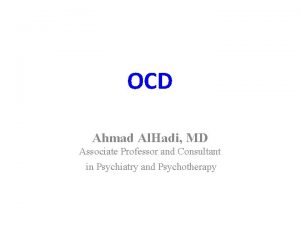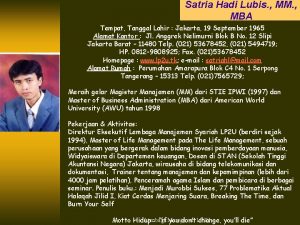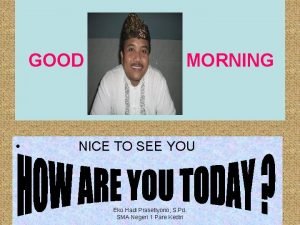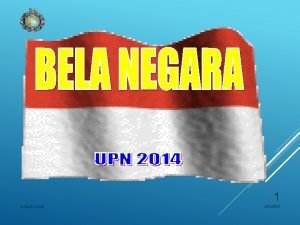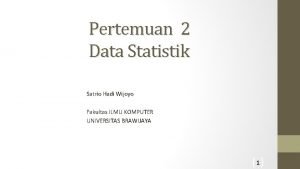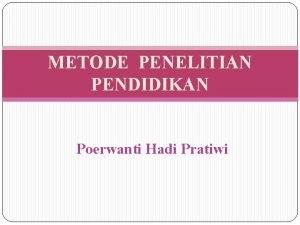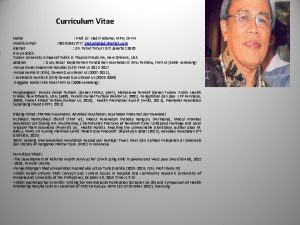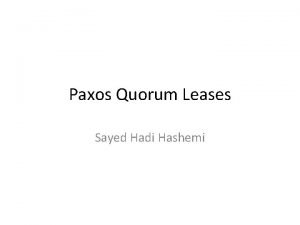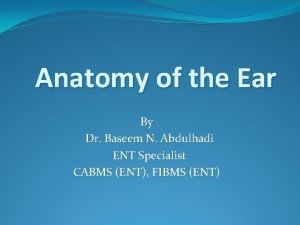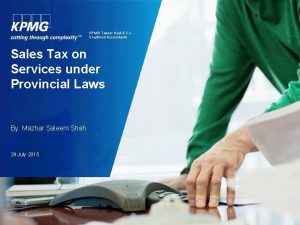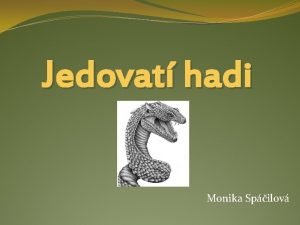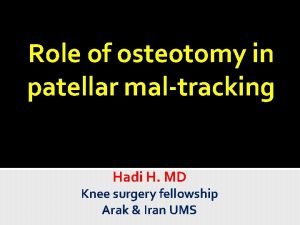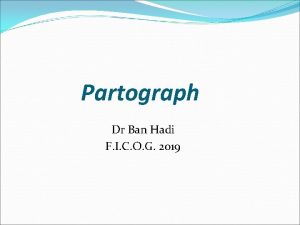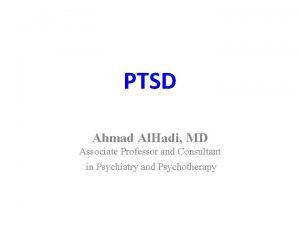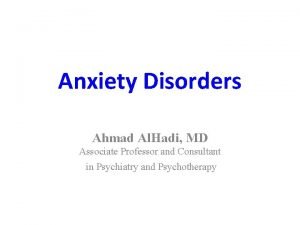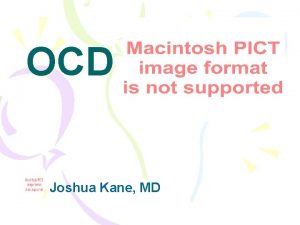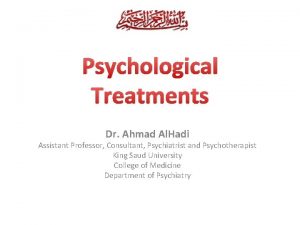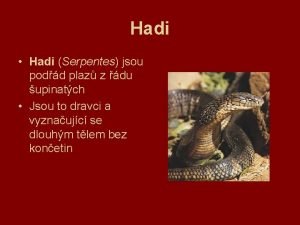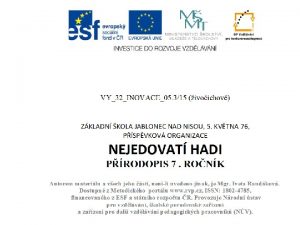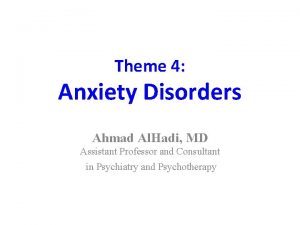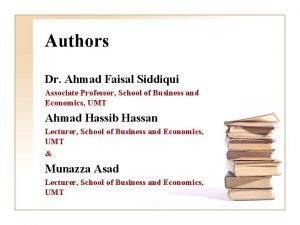OCD Ahmad Al Hadi MD Associate Professor and














- Slides: 14

OCD Ahmad Al. Hadi, MD Associate Professor and Consultant in Psychiatry and Psychotherapy

Objectives: • List the diagnostic criteria for OCD according to DSM 5. • Discuss the prevalence and causes of OCD. • Discuss the treatment plan.

Case Development 2: Family History: • One of Layla's sisters has recurrent intrusive silly doubts regarding ablutions and praying that she cannot resist. This makes her repeat ablution and praying frequently.

Anxiety Disorders 1. 2. 3. 4. 5. 6. 7. Panic Disorder Agoraphobia Specific Phobia Social Phobia. Generalized Anxiety Disorder (GAD) Obsessive Compulsive Disorder (OCD) Post Traumatic Stress Disorder (PTSD), Acute Stress Disorder

OCD Obsessions Compulsions Own: thoughts, Impulses, images Irresistible, Compelling Actions or mental acts Intrusive, Insisting, Unwanted Repetitive Irrational uncontrollable e. g. contaminated hands Done in response to obsessions or according to rules to reduce anxiety or prevent dreaded events or situations e. g. washing hands repeatedly Disorder Time consuming at least 1 hr/d Functioning imp.

OCD DSM 5 A. Presence of obsessions, compulsions, or both: Obsessions are defined by (1) and (2): 1. Recurrent and persistent thoughts, urges, or images that are experienced, at some time during the disturbance, as intrusive and unwanted, and that in most individuals cause marked anxiety or distress. 2. The individual attempts to ignore or suppress such thoughts, urges, or images, or to neutralize them with some other thought or action (i. e. , by performing a compulsion). Compulsions are defined by (1) and (2): 1. Repetitive behaviors (e. g. , hand washing, ordering, checking) or mental acts (e. g. , praying, counting, repeating words silently) that the individual feels driven to perform in response to an obsession or according to rules that must be applied rigidly. 2. The behaviors or mental acts are aimed at preventing or reducing anxiety or distress, or preventing some dreaded event or situation; however, these behaviors or mental acts are not connected in a realistic way with what they are designed to neutralize or prevent, or are clearly excessive. Note: Young children may not be able to articulate the aims of these behaviors or mental acts.

OCD DSM 5 B. The obsessions or compulsions are time-consuming (e. g. , take more than 1 hour per day) or cause clinically significant distress or impairment in social, occupational, or other important areas of functioning. C. The obsessive-compulsive symptoms are not attributable to the physiological effects of a substance (e. g. , a drug of abuse, a medication) or another medical condition. D. The disturbance is not better explained by the symptoms of another mental disorder (e. g. , excessive worries, as in generalized anxiety disorder; preoccupation with appearance, as in body dysmorphic disorder; difficulty discarding or parting with possessions, as in hoarding disorder; hair pulling, as in trichotillomania [hair-pulling disorder]; skin picking, as in excoriation [skin-picking] disorder; stereotypies, as in stereotypic movement disorder; ritualized eating behavior, as in eating disorders; preoccupation with substances or gambling, as in substance-related and addictive disorders; preoccupation with having an illness, as in illness anxiety disorder; sexual urges or fantasies, as in paraphilic disorders; impulses, as in disruptive, impulsecontrol, and conduct disorders; guilty ruminations, as in major depressive disorder; thought insertion or delusional preoccupations, as in schizophrenia spectrum and other psychotic disorders; or repetitive patterns of behavior, as in autism spectrum disorder). Specify if: With good or fair insight: The individual recognizes that obsessive-compulsive disorder beliefs are definitely or probably not true or that they may or may not be true. With poor insight: The individual thinks obsessive-compulsive disorder beliefs are probably true. With absent insight/delusional beliefs: The individual is completely convinced that obsessive-compulsive disorder beliefs are true. Specify if: Tic-related: The individual has a current or past history of a tic disorder.


Main themes of OCD **** sense of danger and/or responsibility. q Contamination washing. q Religious, e. g. repeating Ablution, prayers, divorce, Blasphemous. q Sexual q Aggression q Symmetry slowness q Hoarding

Course • Gradual > acute • Chronic • Waxing & waning


Prognosis • Non – severe • No OCPD • Depressed / anxious mood • Compliance with Tx • Family support Good p. Factors

video Video: What is it like to be OCD

 Promotion from assistant to associate professor
Promotion from assistant to associate professor Hadi ahmad md
Hadi ahmad md Satria hadi lubis profil
Satria hadi lubis profil Dr nur mohammad hadi zahalan
Dr nur mohammad hadi zahalan Good morning nice to see you
Good morning nice to see you Yulianto hadi
Yulianto hadi Satrio hadi wijoyo
Satrio hadi wijoyo Ruang lingkup penelitian pendidikan
Ruang lingkup penelitian pendidikan Hadi pratomo
Hadi pratomo Sayed hadi hashemi
Sayed hadi hashemi Middle ear ossicles
Middle ear ossicles Kpmg taseer hadi & co
Kpmg taseer hadi & co Taipan menší
Taipan menší Hadi mal
Hadi mal Descent of head in partograph
Descent of head in partograph

